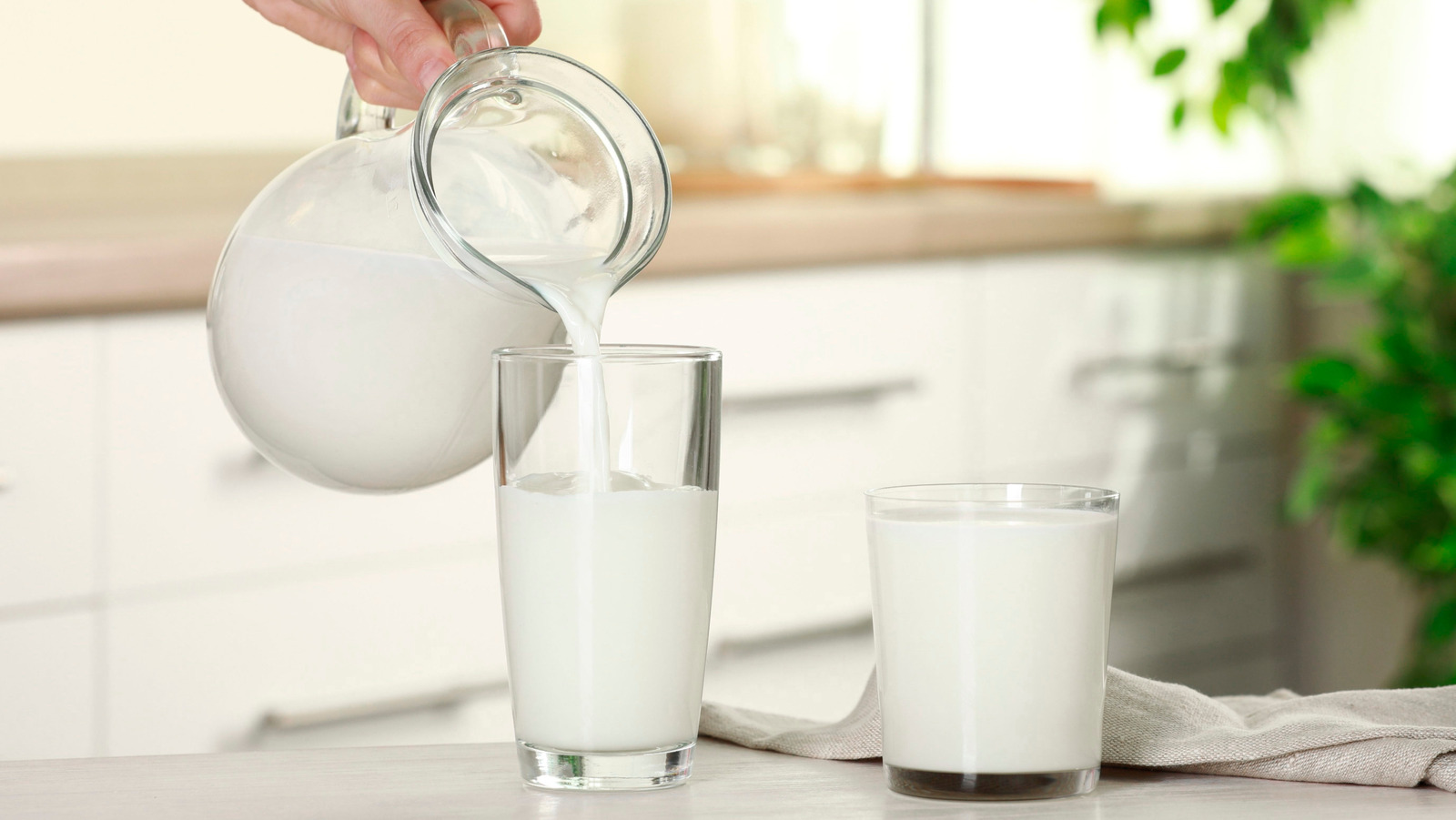It’s easy to assume that milk and cream are essentially the same thing, just with different thicknesses. On some levels that’s true, given that both are liquids in the dairy category and both come from animals, typically cows, sheep, or goats. And they’re both routinely used in kitchens, sometimes interchangeably or slightly altered. But most often, milk and cream have their own separate marks to make in recipes ranging from desserts to coffee drinks, baked goods, sauces, smoothies, cheeses, and much more. When considering the differences between the two, and when to use which, a clear defining characteristic is the butterfat content.
Raw whole milk is the basis for all this dairy deliciousness, but it morphs into various forms of milk and cream based on how the components separate, either naturally or by human intention. It ranges from watery skim milk to rich butterfat, which results in what we know as cream. Milk harbors fat levels ranging from zero to 1, 2, or 3.5%, while cream starts at about 12% for sour cream and can reach 42% for crème fraîche and up to 60% for clotted cream.
Then there’s half-and-half, well known as a restaurant coffee creamer with a minimum 10.5% butterfat, comprised of half milk and half light cream. It’s often tucked inside little foil-topped capsules (sometimes filled with added thickeners or mimicked by artificial versions containing no dairy at all.) As you can imagine, all these dairy renditions make a huge difference in how milk and cream affect daily cooking.
Milk in your kitchen
What’s generally known as “regular milk” is the easiest to distinguish. This is the kind appearing in supermarket coolers, and it comes in four primary forms: Whole milk at roughly 3.5% butterfat, lowfat milks with 1% or 2%, and skim milk with all butterfat removed. It’s the dairy product we drink cold, turn into hot chocolate, mix into milkshakes, and pour into batters. Choosing one over the other often comes down to personal preference or dietary needs, including bolstering daily intakes of calcium, protein, and vitamins A and D.
Several incarnations of milk appear in many supermarkets or specialty grocers, including “full cream” milk with a minimum butterfat content of 3.5%. Though higher than whole milk, it typically still falls way below the butterfat classifications for cream. Organic milks generally maintain the standard fat contents of milks, but adhere to stricter guidelines as to the use of pesticides, fertilizers, antibiotics, hormones, and pasture feeding.
An often misunderstood type of milk, buttermilk, is not quite a “regular milk” but not cream and definitely not butter, as the name suggests. Modern interpretations of buttermilk emerge from non- or low-fat milk, which gets cultured and fermented, producing a thick, slightly sour version of milk with only 1-2% butterfat, depending on the type of milk used.
The luxury of creamy cooking
Next up is that luscious spectrum of velvety cream products. Butterfat percentages rise dramatically in this category, starting with 12-16% for sour cream, which is cultured for that tangy touch in thick dips, or dolloped onto nachos, burritos, and baked potatoes. The next level is light cream, carrying 18-30% butterfat, which blends beautifully into creamy espresso drinks and thinner sauces ladled over things like pasta and seafood, or stirred into curries, soups, scones, casseroles, and frostings.
Whipping creams branch into light and heavy versions, the former averaging about 30-35% fat, and the latter digging deeper with up to 38%. Both perform well in recipes calling for thick, creamy toppings, due to emulsification that prevents the milk from separating out. But the higher fat in heavy whipping cream holds its form longer in showcase desserts like chocolate ganaches, fruit parfaits, and cheesecakes. Both whipping-cream versions thrive in quiches, thick Alfredo sauces, and homemade ice creams.
Though lesser known in U.S. markets, creams from Britain and Europe raise the bar in big ways. They include the velvety crème fraîche from France, and the rich, smooth clotted cream originating in the English farming communities of Cornwall and Devonshire. These two creams come with a considerable jump in butterfat content, making them luxurious treats. Clotted cream is known for pairing with scones and jam or serving over fresh berries, while crème fraîche often appears as a topping or in cooked sauces, soups, mashed potatoes, and vegetables, due to how the high butterfat resists curdling.






